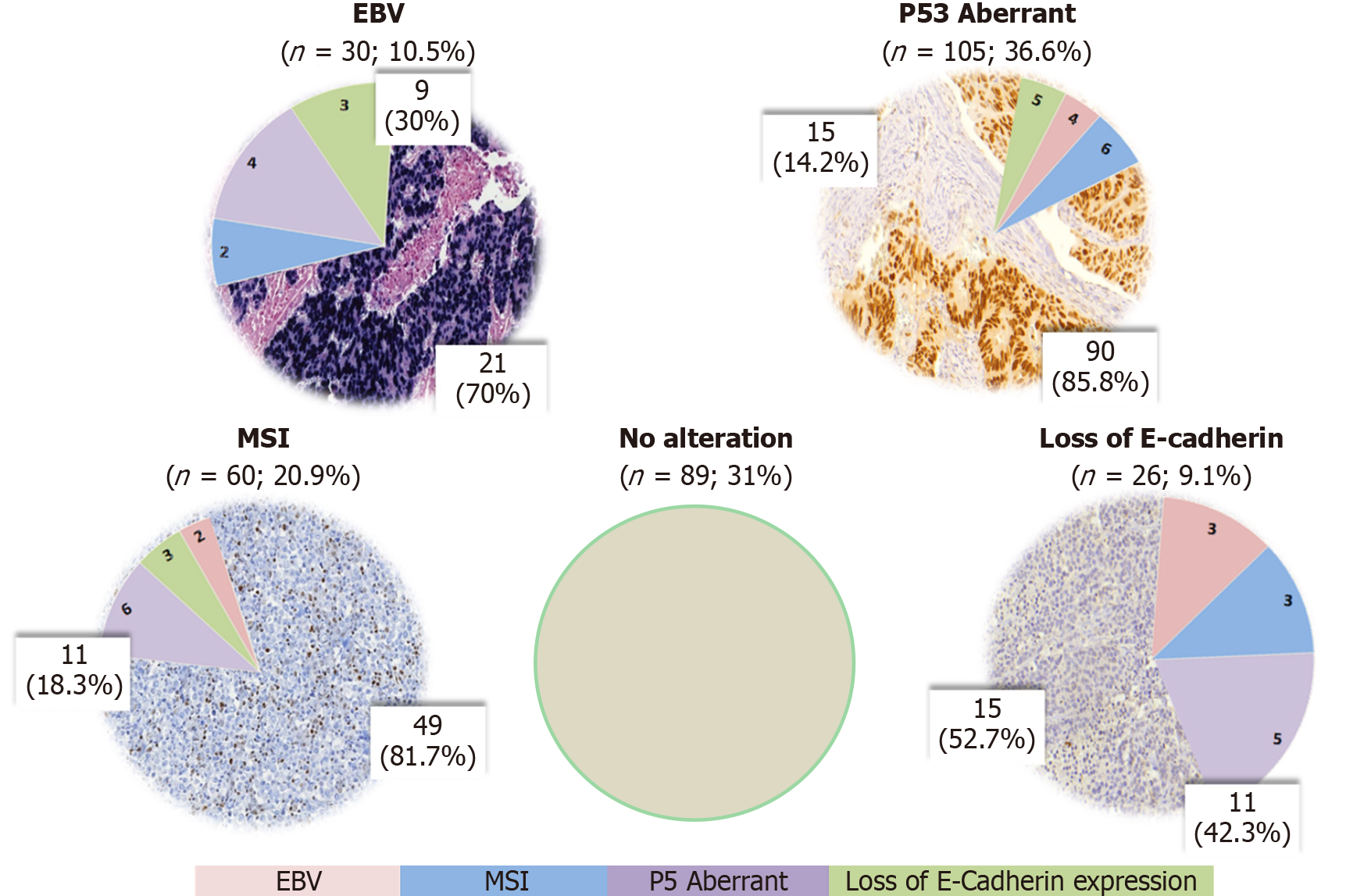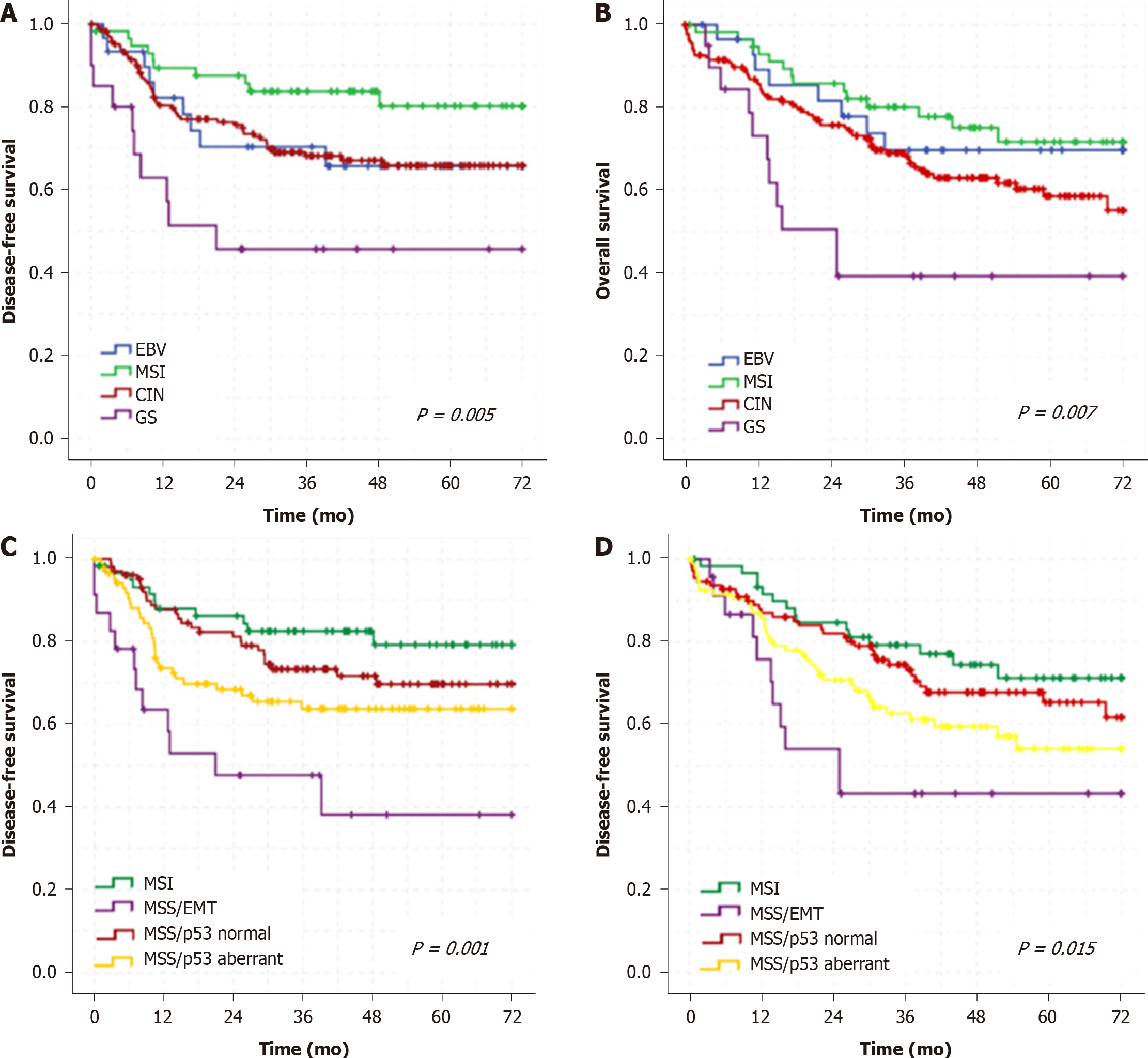Copyright
©The Author(s) 2021.
World J Clin Oncol. Aug 24, 2021; 12(8): 688-701
Published online Aug 24, 2021. doi: 10.5306/wjco.v12.i8.688
Published online Aug 24, 2021. doi: 10.5306/wjco.v12.i8.688
Figure 1 Results for Epstein-Barr virus infection by in situ hybridization, and for microsatellite instability, e-cadherin and p53 expression by immunohistochemistry.
EBV: Epstein-Barr virus; MSI: Microsatellite instability.
Figure 2 Microscopic findings in gastric cancer cases.
A: Tumor positive for Epstein-Barr virus (EBV) by in situ hybridization; B: Gastric cancer (GC) negative for EBV infection; C: Imuno-histoquímico (IHC) analysis of MLH1 expression in tumors with retained expression of MLH1; D: Loss of MLH1 expression; E: GC with preserved E-cadherin expression; F: tumor exhibiting loss of E-cadherin expression; G: Normal IHC expression of p53; H: tumor with aberrant p53 expression.
Figure 3 Flowchart showing the classification of molecular subtypes and final distribution.
A: Classification by TGCG; B: Asian Cancer Research Group classification. EBV: Epstein-Barr virus; EMT: Epithelial to mesenchymal transition; GS: Genomically stable; ISH: In situ hybridization; MSI: Microsatellite instability; MSS: Microsatellite stable.
Figure 4 Disease-free survival and overall survival according to the Cancer Genome Atlas and Asian Cancer Research Group classification.
A: Disease-free survival according to the Cancer Genome Atlas (TCGA) classification; B: Overall survival according to TCGA classification; C: Disease-free survival according to Asian Cancer Research Group (ACRG) classification; D: Overall survival according to ACRG classification. CIN: Chromosomal instability; EBV: Epstein-Barr virus; EMT: Epithelial to mesenchymal transition; GS: Genomically stable; MSI: Microsatellite instability; MSS: Microsatellite stable.
- Citation: Ramos MFKP, Pereira MA, de Mello ES, Cirqueira CDS, Zilberstein B, Alves VAF, Ribeiro-Junior U, Cecconello I. Gastric cancer molecular classification based on immunohistochemistry and in situ hybridization: Analysis in western patients after curative-intent surgery. World J Clin Oncol 2021; 12(8): 688-701
- URL: https://www.wjgnet.com/2218-4333/full/v12/i8/688.htm
- DOI: https://dx.doi.org/10.5306/wjco.v12.i8.688












